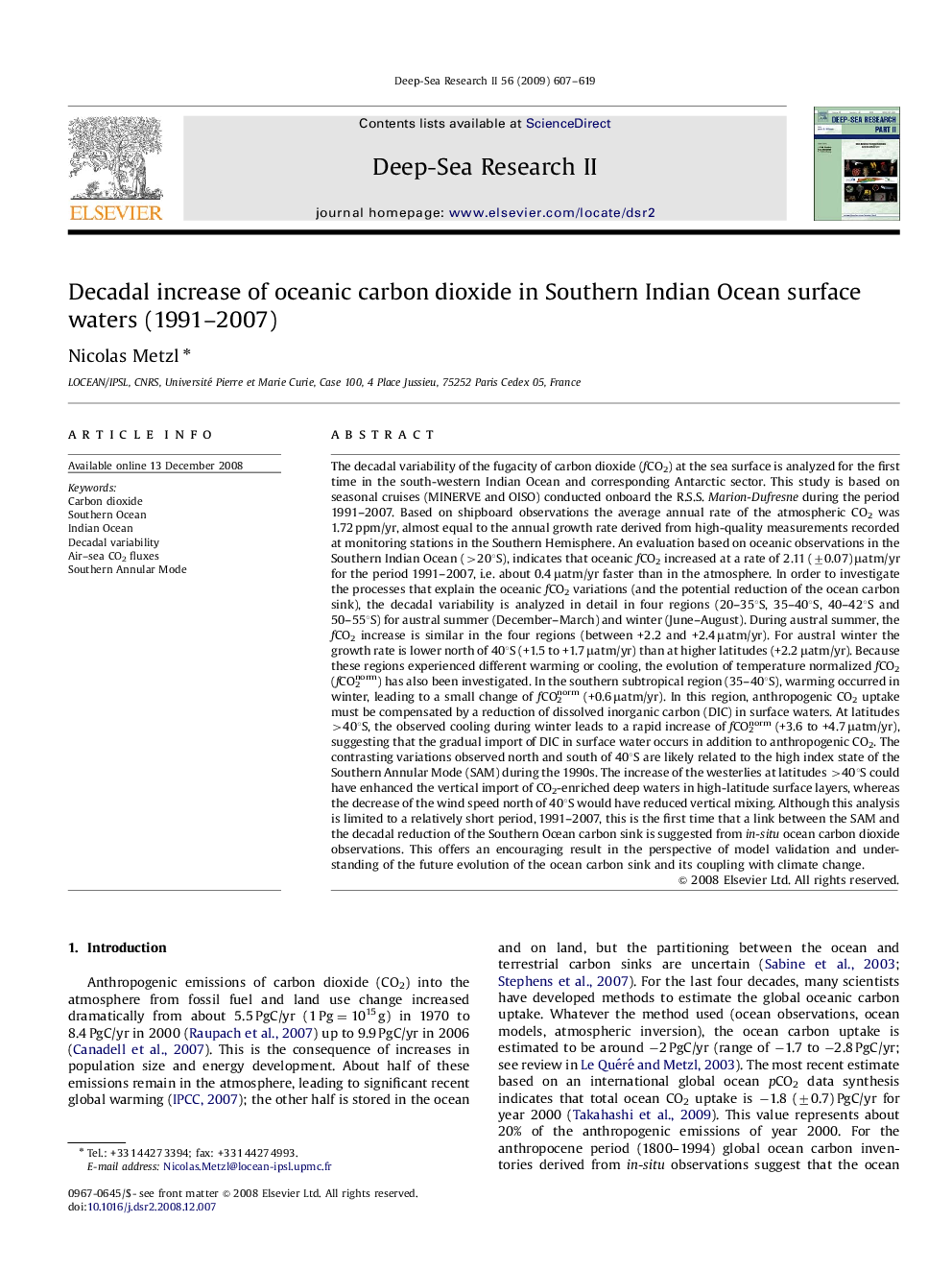| کد مقاله | کد نشریه | سال انتشار | مقاله انگلیسی | نسخه تمام متن |
|---|---|---|---|---|
| 4537775 | 1626485 | 2009 | 13 صفحه PDF | دانلود رایگان |

The decadal variability of the fugacity of carbon dioxide (fCO2) at the sea surface is analyzed for the first time in the south-western Indian Ocean and corresponding Antarctic sector. This study is based on seasonal cruises (MINERVE and OISO) conducted onboard the R.S.S. Marion-Dufresne during the period 1991–2007. Based on shipboard observations the average annual rate of the atmospheric CO2 was 1.72 ppm/yr, almost equal to the annual growth rate derived from high-quality measurements recorded at monitoring stations in the Southern Hemisphere. An evaluation based on oceanic observations in the Southern Indian Ocean (>20°S), indicates that oceanic fCO2 increased at a rate of 2.11 (±0.07) μatm/yr for the period 1991–2007, i.e. about 0.4 μatm/yr faster than in the atmosphere. In order to investigate the processes that explain the oceanic fCO2 variations (and the potential reduction of the ocean carbon sink), the decadal variability is analyzed in detail in four regions (20–35°S, 35–40°S, 40–42°S and 50–55°S) for austral summer (December–March) and winter (June–August). During austral summer, the fCO2 increase is similar in the four regions (between +2.2 and +2.4 μatm/yr). For austral winter the growth rate is lower north of 40°S (+1.5 to +1.7 μatm/yr) than at higher latitudes (+2.2 μatm/yr). Because these regions experienced different warming or cooling, the evolution of temperature normalized fCO2 (fCO2norm) has also been investigated. In the southern subtropical region (35–40°S), warming occurred in winter, leading to a small change of fCO2norm (+0.6 μatm/yr). In this region, anthropogenic CO2 uptake must be compensated by a reduction of dissolved inorganic carbon (DIC) in surface waters. At latitudes >40°S, the observed cooling during winter leads to a rapid increase of fCO2norm (+3.6 to +4.7 μatm/yr), suggesting that the gradual import of DIC in surface water occurs in addition to anthropogenic CO2. The contrasting variations observed north and south of 40°S are likely related to the high index state of the Southern Annular Mode (SAM) during the 1990s. The increase of the westerlies at latitudes >40°S could have enhanced the vertical import of CO2-enriched deep waters in high-latitude surface layers, whereas the decrease of the wind speed north of 40°S would have reduced vertical mixing. Although this analysis is limited to a relatively short period, 1991–2007, this is the first time that a link between the SAM and the decadal reduction of the Southern Ocean carbon sink is suggested from in-situ ocean carbon dioxide observations. This offers an encouraging result in the perspective of model validation and understanding of the future evolution of the ocean carbon sink and its coupling with climate change.
Journal: Deep Sea Research Part II: Topical Studies in Oceanography - Volume 56, Issues 8–10, April 2009, Pages 607–619